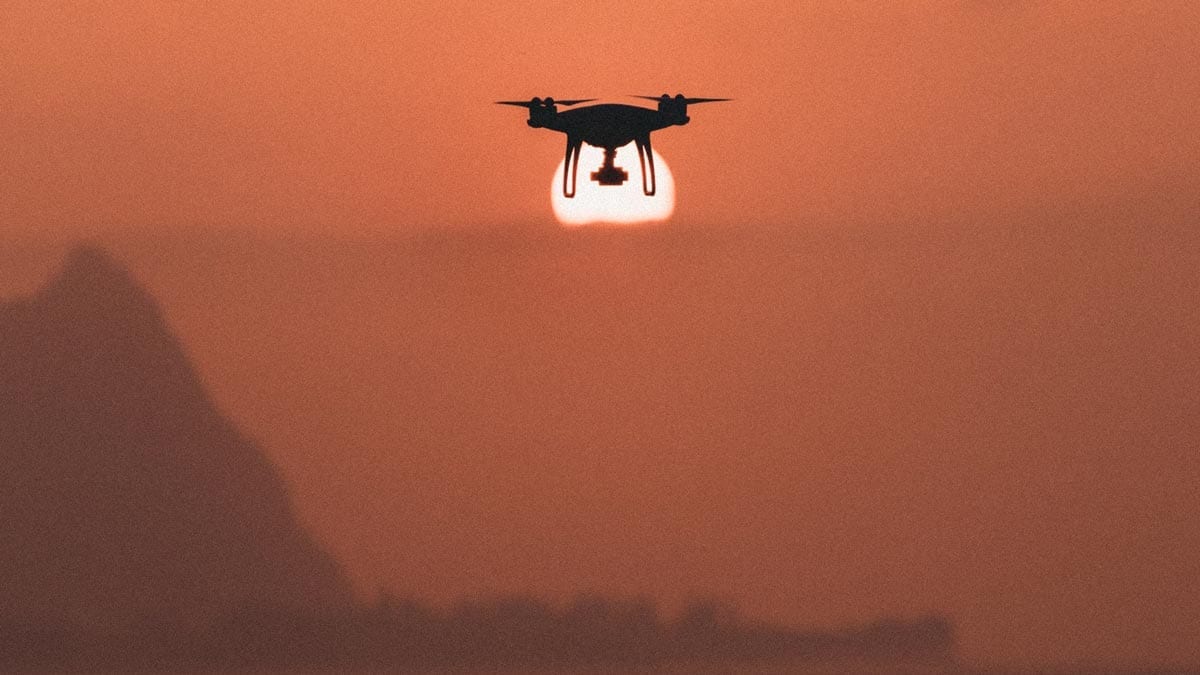News
Monitoring Air Pollution Using Drones
It is proven that air pollution changes abruptly even at relatively short distances, both horizontally and vertically. Air pollutants are especially difficult to monitor with conventional and cheap means of observation. This might, however, change with the usage of drones of Unmanned Aerial Vehicles (UAVs). Why? Because UAVs and drones, with the passage of time, are quickly adapting to become devices capable of carrying sophisticated tools of investigation and monitoring and processing the data that they record or collect.
That would be the reason why drones have found their application in a multitude of sectors; one of which, obviously, being environmental analyses and investigation.
ARIA: Air Pollutants Monitoring Using UAVs is a recent study published by a team of researchers: Gian Marco Bolla, Marco Casagrande, Antonio Comazzetto, Riccardo Dal Moro, Matteo Destro, Edoardo Fantin, Giacomo Colombatti, Alessio Aboudan, Enrico C. Lorenzini; all of whom belong to University of Padova. The purpose of the study is the development of drones or autonomous aerial vehicles that are able to effectively and efficiently detect, quantify and monitor pollutants in the air in environment. This paper aims to collect and explain issues of drone deployment for environmental monitoring activities.
Drone swarms, gathering data through sensor-equipped UAVs and integrating them into current Wireless Sensor Networks will be addressed. The goal of writing this paper, as per the authors is stated, “The ultimate goal of this paper is outlining a preliminary proposal for ARIA project. Its purpose is the deployment of a vertical drone swarm to sense air pollution samples at different heights.”
With ARIA, the researchers aim to provide a new tool to study air quality at different heights that even private citizens could afford.
In the paper, they present an overview of ARIA project, a vertical drone swarm for air pollution monitoring.
Before we move to actually investigating the pollutants present in air experimentally, we need to define the pollutants present in the air:
| Chemical symbol | Substance | Characteristics |
| CO | Carbon Monoxide | Colorless, odorless gas |
| NO2 | Nitrogen Dioxide | Highly reactive gas |
| O3 | Ozone | Pale blue gas |
| SO2 | Sulfur Dioxide | Colorless, irritating smell gas |
| PM2.5 and PM10 | Particulate Matter | Inhalable particles |
| Pb | Lead | Metal particles |
Conventional air pollution monitoring systems have low spacial and temporal resolution. Low spacial resolution means there are only few measuring elements deployed with small coverage. This is caused by the prohibitive cost of the devices. This justifies the usage of cheap sensors that would fit the cause and effectively monitor the concentration of pollutants present in the air.
The Wireless Network is critical in a project like this. In Air Pollutants Monitoring Using UAVs (ARIA) this network is established by improving on the existing networks such that they are inclusive and complementary of systems of Unmanned Aerial Vehicles (UAVs) or autonomous drones. That would mean overcoming problems associated with the application of Wireless Networks to drone systems. Problems like,
- Lack of 3-dimensional sampling;
- Switching behaviour;
- Easiness of maintenance;
Drones have excellent mobility and data gathering prowess, but cannot always rely on coming back to the base to deliver their information. Implementing reasonable communication protocols and algorithms is necessary to improve the efficiency of a system or a swarm of drones as a whole. However, drone networks don’t directly imply swarms: messages could be exchanged with base stations, antennas, any kind of UAV that is dedicated for communication and many others.
Drone’s control systems can be centralized or decentralized and always implement ad hoc networks. This comes as a consequence of the different nature of UAVs compared to classical networks devices and of wifi typical weaknesses.
For more information on decentralization of drones, visit our article: ‘Machine Learning and Flocking Algorithm in Drone Swarms‘ that explains decentralization and its effects in detail.
Drones are specially considered for measuring and monitoring air pollution because of their mobility and convenient flying-movement. UAVs can monitor noise, traffic, light, wind, temperature, humidity, air quality and many other parameters.
One problem arising with drone swarms is the air aberrations caused by rotor movement that affects drones close by each other. Researchers addressed to this issue by studying the physical structure of the quadcopter, disclosing the best sensors placements.
Unfortunately, this investigation needs to be carried out for each UAV model considered since their shape is quite diverse from each other.
To conclude, it can be safely said that ARIA project is a concept with a potential for expansion and very intelligent application.
Citation: G. M. Bolla et al., “ARIA: Air Pollutants Monitoring Using UAVs,” 2018 5th IEEE International Workshop on Metrology for AeroSpace (MetroAeroSpace), Rome, Italy, 2018, pp. 225-229. | doi: 10.1109/MetroAeroSpace.2018.8453584 | URL: https://ieeexplore.ieee.org/document/8453584/





















